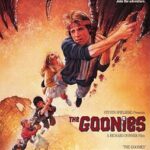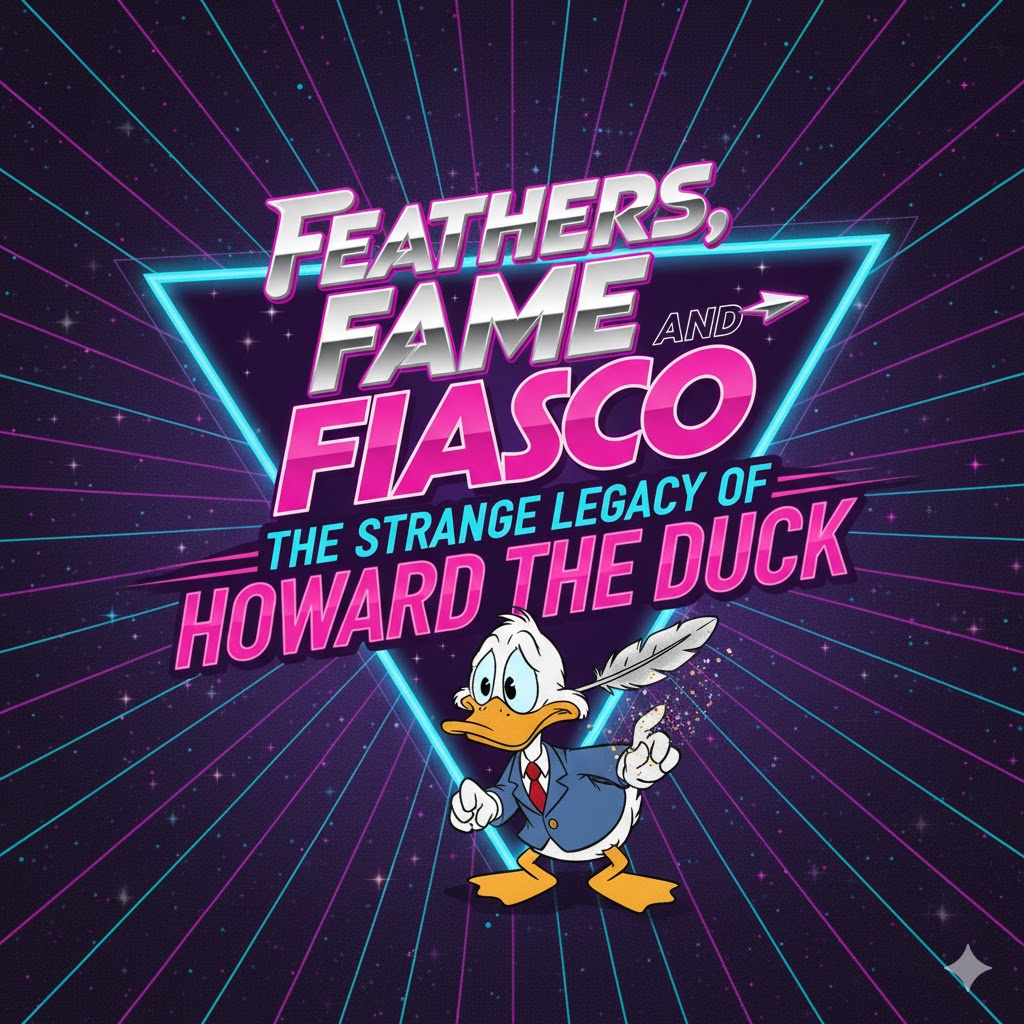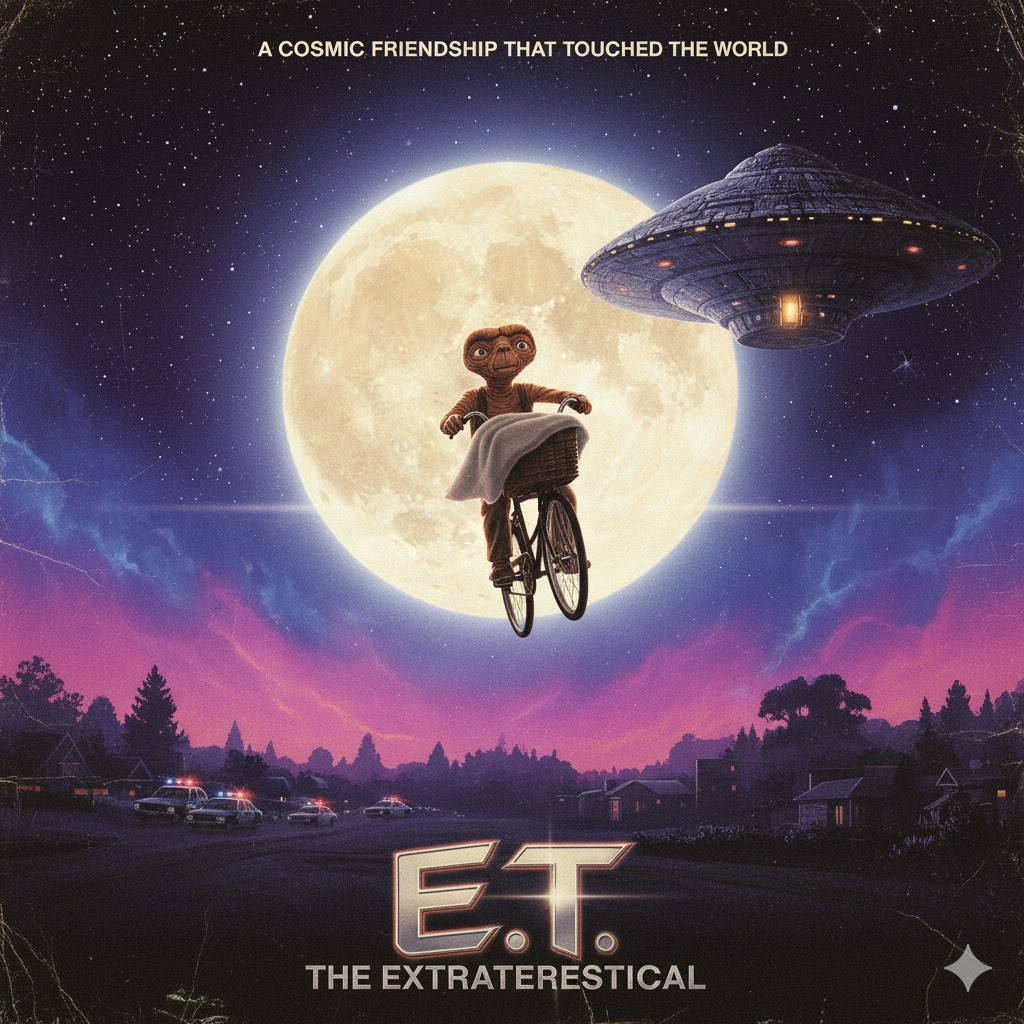 Released in 1985, The Goonies wasn’t just a movie—it was a declaration. A wild, chaotic, treasure-hunting adventure that captured everything great about being a kid in the 1980s, it combined danger, humor, friendship, and rebellion in a way that felt authentic to kids and thrilling to parents. It wasn’t polished like a Disney film or idealized like a Spielberg fairy tale (even though he produced it). It was messy, loud, sometimes scary, and always exciting. It was kids on bikes with backpacks full of candy, climbing through caves, outwitting criminals, solving pirate riddles, and doing the exact things parents told them never to do. And that’s exactly why The Goonies endures—not just as a classic, but as the ultimate ‘80s kids’ movie.
Released in 1985, The Goonies wasn’t just a movie—it was a declaration. A wild, chaotic, treasure-hunting adventure that captured everything great about being a kid in the 1980s, it combined danger, humor, friendship, and rebellion in a way that felt authentic to kids and thrilling to parents. It wasn’t polished like a Disney film or idealized like a Spielberg fairy tale (even though he produced it). It was messy, loud, sometimes scary, and always exciting. It was kids on bikes with backpacks full of candy, climbing through caves, outwitting criminals, solving pirate riddles, and doing the exact things parents told them never to do. And that’s exactly why The Goonies endures—not just as a classic, but as the ultimate ‘80s kids’ movie.
Part of the magic came from timing. The mid-1980s were a golden age for youth-centered cinema. Movies like Stand By Me, E.T., The Karate Kid, and Back to the Future gave kids adventures, but The Goonies felt like it was made by kids, for kids. The cast wasn’t a group of polished teens or wisecracking sidekicks—they were awkward, loud, often foul-mouthed tweens who felt like your friends, or maybe like you. Mikey with his asthma inhaler and unwavering belief. Mouth with his smart mouth and sharper wit. Data with his gadgets and endless optimism. Chunk with his belly and his heart. These weren’t movie stars. They were kids you saw at the arcade or rode bikes with after school.
Directed by Richard Donner and written by Home Alone mastermind Chris Columbus from a story by Steven Spielberg, The Goonies had a powerhouse creative team behind it. But unlike many big-budget movies, it never talked down to its young characters. It didn’t neuter their language or simplify their goals. They weren’t on a mission to learn a lesson or find themselves. They were on a mission to save their homes—and maybe find treasure along the way. There’s a grittiness to the story that makes it feel real. These kids aren’t protected. They fall, bleed, cry, and fight. There are real stakes. The Fratelli family—the criminal villains chasing them—aren’t comic relief. They threaten, they shoot, they kill. And yet, none of it ever feels too dark or too heavy. That’s the tightrope The Goonies walks so perfectly.
Much of the movie’s soul comes from its setting—Astoria, Oregon—a damp, overcast coastal town where the kids are about to lose their homes to rich developers. Their parents are broke, and the world around them is closing in. But in the attic of Mikey’s house, they find an old treasure map that belonged to a legendary pirate named One-Eyed Willy. And just like that, the movie explodes into the greatest fantasy a kid could dream up: a secret tunnel, booby traps, hidden keys, underground caverns, pirate ships, and treasure. The Goonies is a suburban kid’s answer to Indiana Jones. But where Indiana had a whip and a fedora, the Goonies had marble bags, flashlights, and a refusal to quit.
The journey they take is outrageous, but never unbelievable. Every trap, every twist feels like something your overactive imagination could have dreamed up after watching too many Saturday morning cartoons. And that’s by design. The movie takes the logic of childhood dreams seriously. It understands how kids think, how they solve problems, how they argue, panic, and rally around each other. It doesn’t polish them. It doesn’t censor them. It just lets them be who they are, and in doing so, makes them immortal.
Few movies have ever nailed group dynamics the way The Goonies did. Each kid brings something different to the team, and together, they’re unstoppable. There’s no chosen one. No single hero. Just a scrappy band of misfits who refuse to give up. Mikey is the heart, Mouth is the voice, Chunk is the comic relief (and ultimately the bravest of them all), and Data is the genius inventor with a Batman-level utility belt of homemade tech. Even Andy and Stef, the two older girls who get roped into the adventure, break out of the damsel mold by the end. And of course, there’s Sloth—the deformed but gentle brother of the Fratellis—who ends up becoming one of the film’s most iconic heroes. “Hey you guys!” isn’t just a catchphrase. It’s a war cry for anyone who’s ever felt like an outsider.
The chemistry between the cast is lightning in a bottle. Much of the dialogue was improvised. Donner encouraged the kids to yell over each other, argue, and joke like real friends would. The result is a kind of natural chaos that feels more like eavesdropping on your own group of friends than watching a scripted movie. Even decades later, their performances feel lived-in. These kids weren’t polished Disney Channel types—they were real, a little rough around the edges, and utterly unforgettable.
But The Goonies is more than its characters. It’s a movie built on tactile wonder. The sets weren’t green screens or CGI-enhanced facades. The pirate ship, the traps, the tunnels—these were built full-scale. When the kids gasp at the ship in the final act, it’s because they were seeing it for the first time. That sense of awe is real. You can feel the dampness of the caves, the crunch of the bones, the shimmer of the treasure. It gives the movie a texture modern adventure films often lack. It’s not polished. It’s dirty, creaky, alive.
Musically, The Goonies gave us an equally iconic backdrop. Cyndi Lauper’s “The Goonies ‘R’ Good Enough” became an anthem, with a music video that featured the cast and a surreal pirate story of its own. The synth-heavy score by Dave Grusin captures the wonder and danger of the adventure without ever becoming overbearing. It adds emotional heft to a movie that could have easily gone off the rails, grounding the fantasy with a real sense of danger and triumph.
Culturally, The Goonies exploded. Kids didn’t just watch the movie—they lived it. They reenacted scenes in the backyard, memorized every line, and fantasized about finding their own treasure map in the attic. It inspired sleepover debates, Halloween costumes, and lifelong friendships. And it gave birth to a phrase that still resonates: “Goonies never say die.” More than just a quote, it’s a mission statement—a call to bravery, resilience, and sticking with your friends when things get rough.
Today, The Goonies holds up in a way few 1980s movies do. It doesn’t rely on nostalgia or irony. It isn’t a parody of itself. It’s still funny. It’s still scary. It’s still full of moments that make you cheer, cringe, and maybe cry. The reason it endures isn’t because it was a product of its time—it’s because it transcended it. Every generation has kids who feel overlooked, powerless, or pushed aside. The Goonies tells them they’re not alone. That adventure is out there. That courage matters. That friendship can change everything.
It’s no surprise that attempts to remake or sequel The Goonies have never gotten off the ground. You can’t recreate lightning in a bottle. You can’t stage genuine magic. The Goonies weren’t superheroes, and they weren’t chosen. They were just kids, out to save their homes, trying to hang onto something pure in a world that didn’t always make sense. And that, in the end, is what makes the movie so perfect.
So when people ask why The Goonies is considered the ultimate kids’ movie of the 1980s, the answer is simple. It was messy, brave, loud, and fearless—just like childhood. It told us we could be heroes, even if we were broke, weird, scared, or short. It didn’t sugarcoat danger, but it didn’t shy away from joy. It gave kids the reins, and it never once looked back. The Goonies wasn’t just a movie. It was a treasure map. And for those who followed it, the adventure has never really ended.

